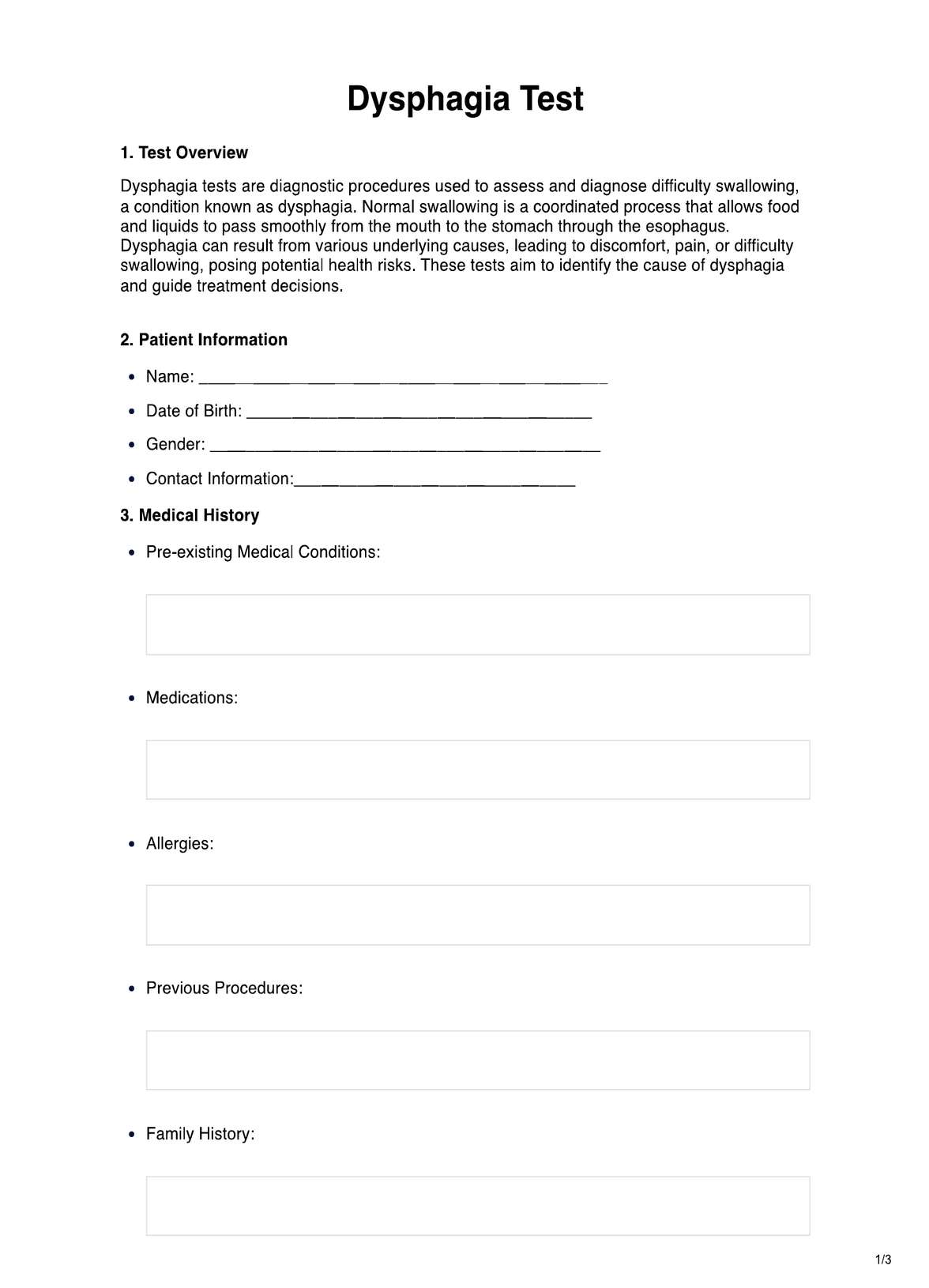Dysphagia Tests are typically requested by healthcare professionals such as speech and language pathologists, otolaryngologists (ear, nose, and throat specialists), gastroenterologists, and neurologists. These specialists often initiate the test when patients present with symptoms of swallowing difficulties or related issues.

Dysphagia
Explore the comprehensive Dysphagia Test and understand its significance with this free PDF download. Learn about dysphagia assessment today!
Dysphagia Template
Commonly asked questions
Dysphagia Tests are used to assess, diagnose, and manage swallowing difficulties, medically known as dysphagia. They help determine the underlying causes of dysphagia, ranging from neurological conditions to structural abnormalities or functional issues.
Once a diagnosis is established, Dysphagia Tests guide treatment planning, enabling healthcare providers to develop tailored interventions such as dietary modifications, therapeutic exercises, and medications. These tests also serve as a tool for monitoring patient progress and may lead to referrals for further specialized evaluations or procedures.
The duration of a Dysphagia Test can vary depending on the specific type of test being conducted and the patient's individual needs. Here are approximate timeframes for standard Dysphagia Tests:
- Bedside Swallow Screen: Typically takes 15-30 minutes.
- Fiberoptic Endoscopic Evaluation of Swallow (FEES): Usually lasts 30-45 minutes.
- Upper Endoscopy: Can range from 15 minutes to an hour or longer, including preparation and recovery time.
- Videofluoroscopic Swallow Study (VFSS): Generally takes 15-30 minutes but can vary.
- Clinical Assessment: Duration varies based on the extent of the examination and patient cooperation.
Patients should consult with their healthcare providers for a more precise estimate of the time required for their Dysphagia Test.
EHR and practice management software
Get started for free
*No credit card required
Free
$0/usd
Unlimited clients
Telehealth
1GB of storage
Client portal text
Automated billing and online payments











